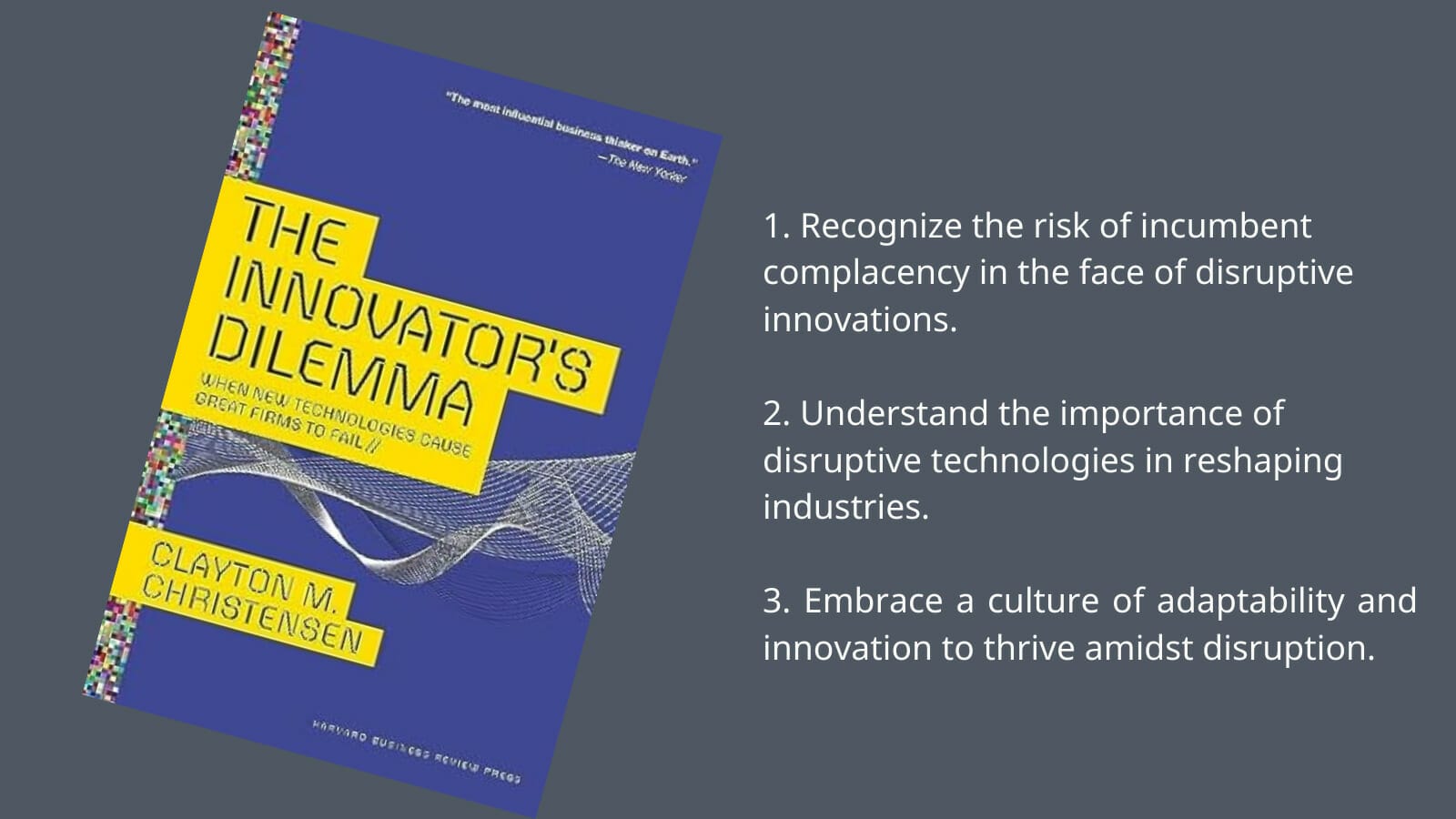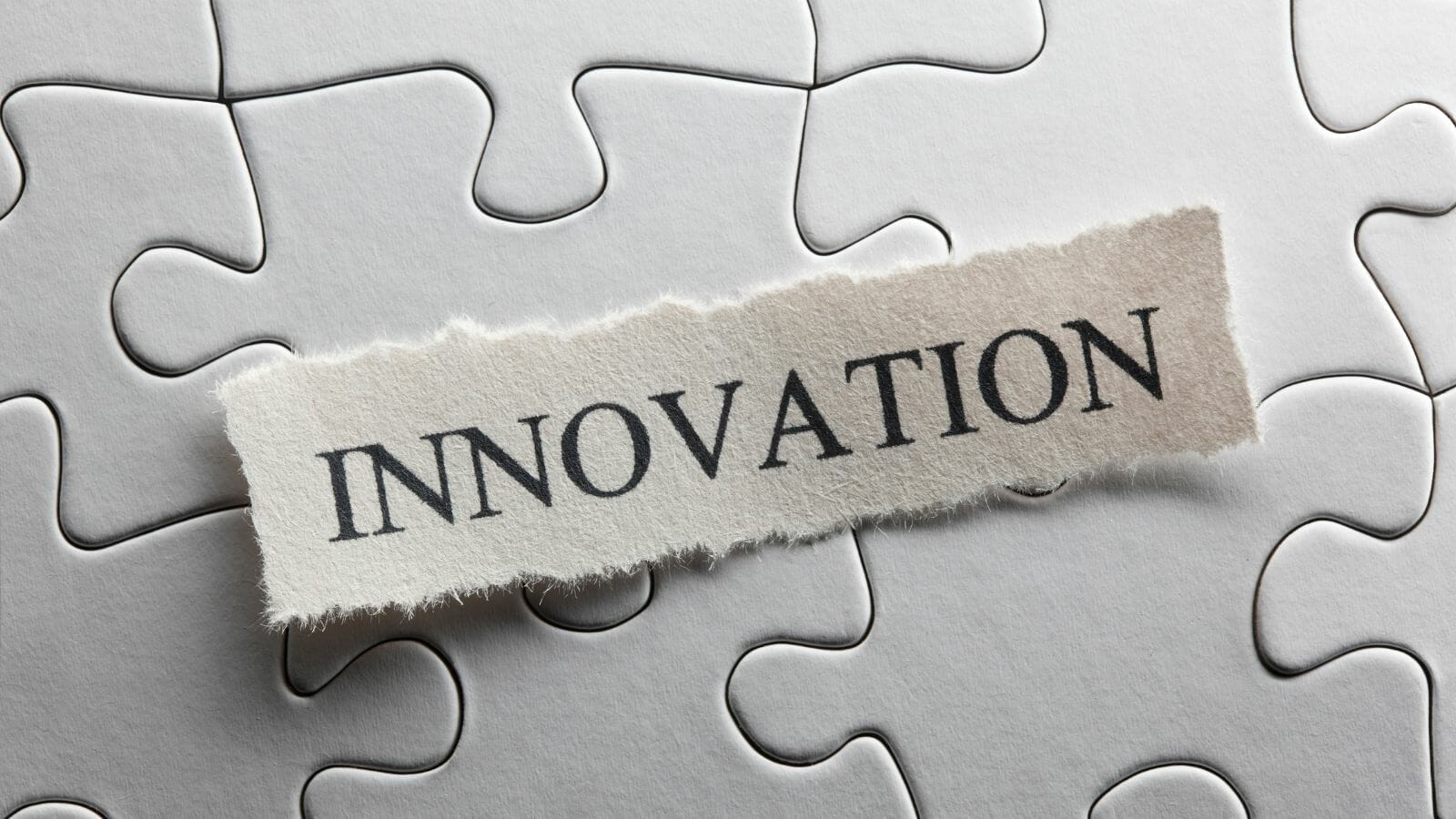The book, The Innovator’s Dilemma, by Clayton Christiansen, is a seminal investment literature book.
It helps investors understand why new technologies cause great companies to fail. His book is cited by many great thought leaders, from Steve Jobs to Malcolm Gladwell.
In today’s post, we will learn:
- Explaining The Innovator’s Dilemma
- Core Concepts of the Book
- Examples of Innovator’s Dilemma: Case Studies
- Practical Lessons for Investors
- Different Views on The Innovator’s Dilemma
Okay, let’s dive in and learn more about the Innovator’s Dilemma.
Explaining The Innovator’s Dilemma
Have you ever heard of The Innovator’s Dilemma?
It’s a concept in the business world that greatly impacts how companies grow and sometimes struggle.

Let’s break it down in simple terms.
What is the Innovator’s Dilemma?
The Innovator’s Dilemma is like a tough choice that businesses face. Imagine a company that makes a popular product. They’re doing well and making lots of money. Then, along comes a new, smaller company with a different idea. This new idea might not be as good as the older one right away, but it’s getting better quickly.
Here’s the dilemma: The big, successful company has a choice. They can stick with what they’re doing, making them money. Or, they can try this new, risky idea that might not make money initially. If they don’t try the new idea, they could miss out on the future, and a smaller company might grow and eventually beat them.
Examples of the Innovator’s Dilemma
1. Kodak: Remember those old film cameras? Kodak was a giant in that industry. But Kodak didn’t jump on the new technology fast enough when digital cameras came along. They stuck with what they knew, and that hurt them. Kodak eventually filed for bankruptcy while digital camera companies thrived.
2. Blockbuster: In the early 2000s, Blockbuster was the king of renting movies and video games. Then, a little-known company, Netflix, started mailing DVDs to people’s homes. Blockbuster could have done something similar, but they didn’t. Netflix continued to innovate, eventually shifting to streaming, and Blockbuster went out of business.
3. Nokia: Nokia used to dominate the mobile phone market. But when smartphones came along, they hesitated. Apple’s iPhone and later, Android phones, became huge successes. Nokia couldn’t catch up, and their phone business dwindled.
4. Blackberry: Before the era of touchscreens, Blackberry was the go-to smartphone for business professionals. Then, the iPhone brought touchscreens and a new way to use smartphones. Blackberry didn’t adapt quickly enough, and they lost their market share.
These big companies faced the Innovator’s Dilemma in each of these cases. They didn’t want to risk what they already had, so they missed out on the future. They were driving a horse-drawn carriage while the world was moving to cars.
Understanding the Innovator’s Dilemma is essential for both business leaders and investors. Companies need to know when to stick with what they have and when to take a risk on something new.
Investors should watch for signs that a company is adapting to changing times. If they don’t, it could be a sign of trouble ahead.
Core Concepts of the Book
In the business world, a few key concepts can make or break a company’s future.

One of the most important concepts is disruptive innovation, and it’s at the heart of the book we’re exploring. Investors spill a lot of ink looking for the next Amazon or Google. These concepts can help us identify these “potential” disruptors earlier, potentially.
Let’s dive into the book’s core concepts and understand how they are explained and illustrated.
Disruptive Innovation
Disruptive innovation is like a game-changer in the business world. It’s when a smaller, often overlooked company introduces a new product or service that might not seem as good as the big players offer.
However, this new idea has the potential to grow and improve rapidly, eventually overtaking the established giants.
The book explains disruptive innovation is not about creating something better than what already exists. Instead, it’s about creating something different that opens up new possibilities.
For instance, think about how Netflix disrupted the DVD rental market. At first, streaming quality wasn’t as good as DVDs, but it was more convenient. Over time, streaming improved, and Netflix became a giant in the entertainment industry.
Sustaining Innovation
Conversely, sustaining innovation is about improving existing products or services.
Big companies are usually good at this. They listen to their customers and improve their products based on feedback. But here’s the catch: while sustaining innovation helps companies stay competitive, it doesn’t usually lead to groundbreaking change. It keeps them in the game but doesn’t let them change the rules.
Disruptive Technologies
Disruptive technologies are the tools that make disruptive innovation possible. They’re often simpler, more affordable, and easier to use than existing technologies.
Think about how smartphones disrupted the market for digital cameras, GPS devices, and even traditional phone lines. These technologies allowed new companies to enter the scene and create something different and better.
Now, let’s discuss how the book explains and illustrates these concepts.
The book takes real-world examples to show how disruptive innovation works. It tells stories of how companies like Kodak and Blockbuster, once industry giants, failed to adapt to disruptive changes.
These stories help readers understand how disruptive technologies can slowly but steadily erode established businesses.
The stories of both Kodak and Blockbuster offer powerful examples of how companies failing to adapt can lead to the end quicker than many of us would expect.
Additionally, the book provides insights into companies that successfully navigated disruptive innovations. It explains how they recognized the potential of new technologies and adapted their strategies accordingly.
One example is Apple, which transformed the music industry with the iPod and iTunes.
Examples of Innovator’s Dilemma: Case Studies
Clayton Christianson wrote the book in the early 1990s, and his examples were illustrative and fantastic.

They include the successes and failures of:
- Netflix
- Apple
- Blockbuster
- Kodak
- Nokia
- Blackberry
But we are in a different world today, and I thought it might be interesting to look at a few more “modern” examples to see how they might apply to our world.
Certainly, let’s delve deeper into each use case of success and failure with disruptive innovations:
Uber – Revolutionizing Transportation
Uber emerged as a disruptor in the transportation industry by leveraging mobile technology to connect riders with drivers.
Before Uber, hailing a taxi meant standing on a street corner and hoping for an available cab. Uber’s smartphone app allows users to request rides, track drivers, and make cashless payments.
Key Factors of Success:
- Technology Adoption: Uber’s quick adoption of GPS and mobile app technology was crucial. Passengers could track their rides in real-time, enhancing safety and convenience.
- Market Expansion: Uber expanded rapidly to cities worldwide, gaining a first-mover advantage in many places.
- Diversification: The company evolved beyond ride-hailing to include Uber Eats, Uber Freight, and Uber for Business, diversifying its revenue streams.
Tesla – Electrifying the Automotive Industry
Tesla disrupted the traditional automotive industry by pioneering electric vehicles (EVs) and renewable energy solutions. While major automakers hesitated to invest in electric cars, Tesla embraced the potential of EVs and introduced groundbreaking models like the Model S and Model 3.
Key Factors of Success:
- Innovation in EV Batteries: Tesla’s development of high-performance batteries and supercharging stations addressed EV limitations, alleviating range anxiety.
- Brand and Vision: Tesla’s focus on sustainability and the vision of a cleaner future resonated with consumers, building a strong brand.
- Autonomous Driving: Tesla’s push towards autonomous driving technologies has kept it at the forefront of the automotive industry.
Amazon – Staying Ahead in E-Commerce
Amazon is a prime example of a company that embraced disruptive innovation.
Founded as an online bookstore, Amazon recognized the internet’s potential to revolutionize retail. The company expanded its product offerings, developed efficient logistics, and introduced innovations like Amazon Prime. They also introduced the power of the cloud by creating AWS, the market leader in cloud computing.
Key Factors of Success:
- Evolving Business Model: Amazon’s transition from bookseller to e-commerce giant to cloud provider showcases its adaptability and willingness to evolve.
- Customer Focus: The company prioritized customer experience, pioneering concepts like one-click shopping and same-day delivery.
- Infrastructure Investment: Amazon invested heavily in warehouses and distribution networks, ensuring timely and efficient deliveries.
Intel – Missing the Mobile Revolution
Intel, a once dominant force in PC processors, faltered when confronted with the disruptive innovation of mobile computing and fell behind in the race for smaller chips.
While ARM-based processors powered smartphones and tablets, Intel struggled to adapt its architecture, missing out on a significant market. Intel also fell behind in the race to stay on the leading edge of smaller, more powerful chips.
Key Factors of Failure:
- Resistance to Change: Intel’s reluctance to shift from its PC-centric focus prevented it from capitalizing on mobile technology.
- Competitive Landscape: Rival companies like Qualcomm, AMD, and ARM Holdings embraced mobile processors, gaining a competitive edge.
- Loss of Market Share: Intel’s inability to secure a substantial presence in mobile computing and leading-edge chips led to a decline in market share and revenue.
These case studies highlight the critical role of disruptive innovation in reshaping industries and companies.
Success comes to those who recognize and adapt to these innovations, while failure often results from resistance or hesitation to embrace change. The ability to anticipate and respond to disruptive technologies is a defining factor in a company’s long-term viability and success.
Practical Lessons for Investors
What can investors learn from the lessons of The Innovator’s Dilemma?

Below are three practical takeaways from the lessons learned from the book to help you become a better investor.
- Recognize the Power of Disruption: Investors should understand that disruptive innovations can reshape industries. These innovations often start in niche markets and may initially seem inferior to existing products. However, they can rapidly improve and capture larger market segments, displacing established players. Investors should watch emerging technologies and startups, which could be key to future market dominance.
- Diversify Your Investments: To mitigate the risk of being caught off guard by disruptive innovations, investors should diversify their portfolios. Holding a mix of established and smaller, innovative firms can help balance risk and potential reward. While established companies may provide stability, startups and tech firms can offer growth opportunities, especially if they work on disruptive technologies.
- Stay Informed and Adaptive: Staying informed about industry trends and emerging technologies is crucial. Investors should regularly research and assess the companies they invest in to determine if they adapt to disruptive changes or are at risk of disruption. Being proactive and willing to adjust investment strategies based on market dynamics is key to long-term success in a world where innovation is constant.
By understanding these lessons, investors can better understand the landscape of disruption in the markets and how they can adapt to those disruptions.
Businesses are not static entities; changes will come for every company or industry, even dominant companies like Apple. Staying informed and updated on your particular investments will help mitigate some risks, but not all of them.
Different Views on The Innovator’s Dilemma
While The Innovator’s Dilemma by Clayton Christensen has received widespread acclaim for its groundbreaking ideas, it has also sparked debates and criticisms in the business and academic communities.

1. Disagreements on the Theory’s Applicability: Some critics argue that the book’s theories may not apply universally to all industries and situations. They contend that disruptive innovations may not always follow the same patterns described in the book. Every industry is unique, and factors such as regulatory environments and consumer behavior can significantly influence how disruptions unfold.
2. The Role of Established Companies: Another point of contention is the ability of established companies to adapt and overcome the innovator’s dilemma. While the book suggests that large corporations often struggle to respond to disruptive threats, some argue that well-managed companies can successfully navigate these challenges through strategic investments and innovation initiatives.
3. The Importance of Sustaining Innovation: Critics emphasize the significance of sustaining innovation – incremental improvements to existing products or services. They argue that while disruptive innovation is essential, established companies should not neglect continuous improvement efforts to remain competitive.
4.Timing and Predictability: Some question the book’s ability to predict disruptive events accurately. Disruptions can be unpredictable, and relying solely on the book’s framework may lead to missed opportunities or premature decisions.
5. Ethical Considerations: Critics also raise ethical concerns about disruptive innovations, particularly in cases where job losses or environmental impacts occur. These debates highlight the broader societal implications of disruptive technologies.
It’s important to note that these critiques and controversies do not diminish the book’s overall significance.
I have read the book three times and learn something new every time I pick it up, maybe because I am improving as an investor with more experience, or maybe because it is such a rich, deep book with lots of information relevant to investing.
Investor Takeaway
In conclusion, The Innovator’s Dilemma by Clayton Christensen is a seminal work in business literature.
Its insights into disruptive innovation have reshaped the way we understand industry evolution and the challenges faced by established companies. By delving into the book’s key concepts of disruptive innovation, sustaining innovation, and disruptive technologies, readers understand the forces that drive change in business landscapes.
The book’s enduring significance lies in its ability to shed light on market leaders’ difficulties when confronted with disruptive newcomers.
It is a cautionary tale for established companies, urging them to remain vigilant, adaptive, and open to innovation. Moreover, it offers a blueprint for entrepreneurs and innovators to identify opportunities within the gaps left by incumbents.
The book serves as a gateway to a broader conversation about industry dynamics, strategic decision-making, and the ever-changing nature of business.
Remember, embrace disruption, for it is the catalyst for progress and the driver of innovation.
And with that, we will wrap up our discussion about The Innovator’s Dilemma and what we can learn from the book.
Thank you for taking the time to read today’s post, and I hope you find some value here. If I can further assist, please don’t hesitate to reach out.
Until next time, take care and be safe out there,
Dave
Related posts:
- The Intelligent Investor: Is it Outdated? Is it for Beginners? Should I Read it? Edited 3/24/2023 Warren Buffett started learning about investing when he was seven or eight. I know a late bloomer. Buffett’s father started a small investment...
- Irrational Exuberance: A Book Review Updated 6/24/2023 Irrational exuberance refers to extreme behavior enthusiasm, often compared to the stock market and investor behavior. Typically, it means investors are excited and...
- Philip Fisher’s 15 Points for Picking a Stock – Chapter 3 Summary Philip Fisher, author of Uncommon Stocks and Uncommon Profits, boils down his investment research into 15 key points in Chapter 3 of his book, Uncommon...
- What is Andrew Sather’s Stock Market PDF All About? Updated 4/21/2023 When done correctly, stock investing can lead to long-term wealth. But how do we start? Starting to invest can be a scary, intimidating...
